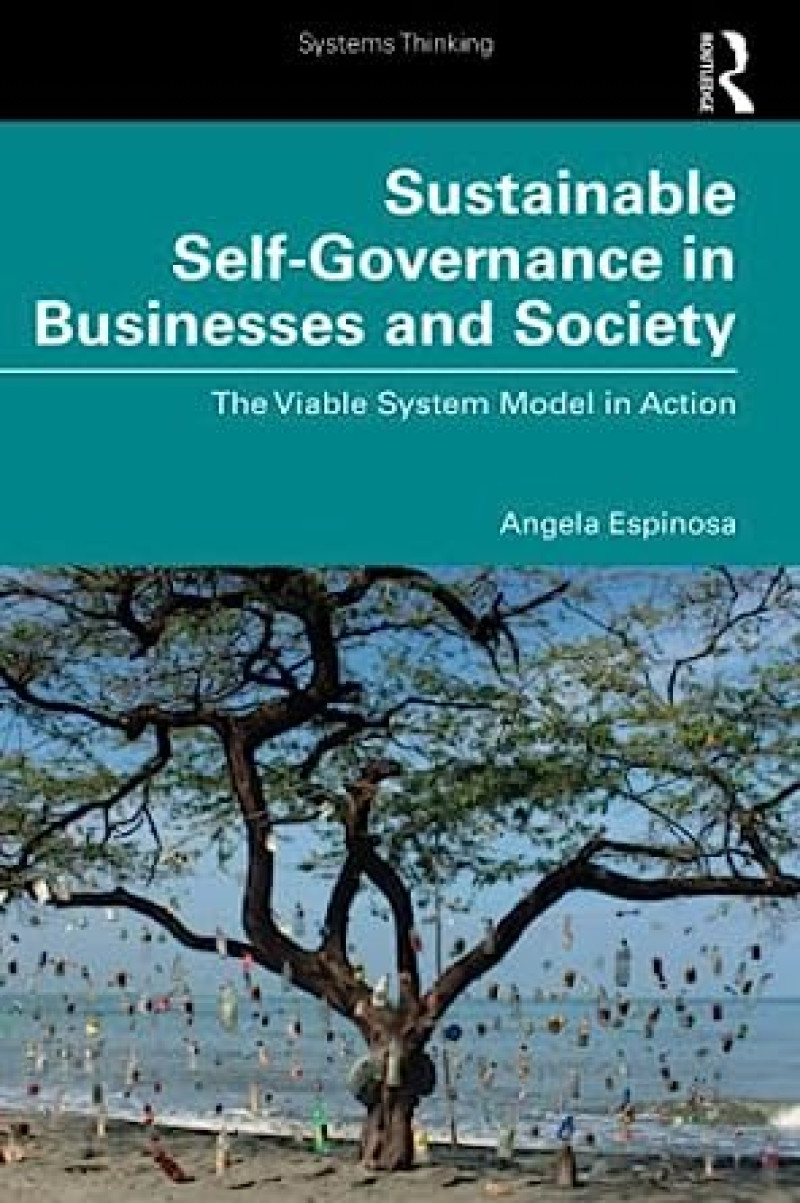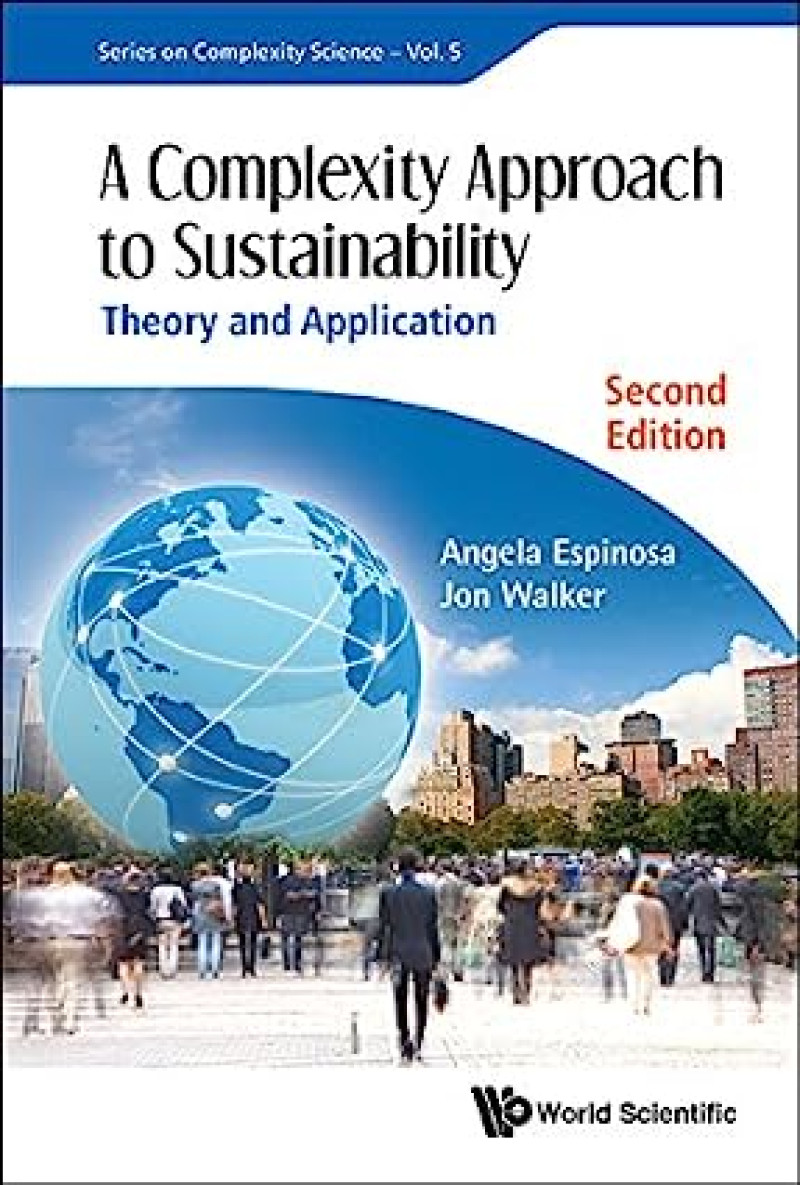Angela Espinosa
On Stafford Beer's Viable Systems Model, his personality, and his life at his cottage, as discussed by one of his disciples.
_Interview
Angela Espinosa, an international leader in organizational cybernetics, shared insights about Stafford Beer's Viable Systems Model and his personality on August 24, 2021.
The interview explored Beer's life, character, and personal space, offering a deep understanding of his work and personality.
***
Evgeny: Hi Angela, could you tell us a bit about yourself and your interest in cybernetics?
Angela: My name is Angela Espinosa, and I am a computer and systems engineer from Colombia. My interest in cybernetics was sparked after meeting Raúl Espejoduring a seminar in Colombia in the early 1980s. Following this experience, I decided to pursue a PhD in organizational cybernetics at Aston University in England. Espejo supervised my PhD, and I was thrilled to have the opportunity to work with him. I was driven to pursue my doctorate in cybernetics because of my interest in Stafford Beer’s work.
Evgeny: Could you tell us about the work that you did on the Viable System Model?
Angela: I completed my PhD by doing a case study of the strategic information management of the Colombia President's Office, using the Viable System Model and Stafford Beer's theories. After completing my PhD, I returned to Colombia and worked as the Secretary of Informatics at the President's Office for two years. However, I had to quit this job to finish my PhD, as advised by Raúl Espejo. When I returned to Colombia, I became a professor at University of the Andes.
At that time, I led four major national programs in Colombia based on Stafford's ideas, which had a significant impact on the country. I worked with colleagues interested in cybernetics and systems, eventually forming a strong group in the Industrial Department. Together with Alfonso Reyes and Roberto Zarama, we developed a new curriculum on systems and cybernetics and created popular programs and master's degrees based on these ideas. Many students were trained in cybernetics during those eight years, and they completed master's dissertations on the topic. I led four major consultancy projects, and some of those students worked with me on projects at the National Auditing Office and the Ministry of Education.
Evgeny: How did you meet Stafford Beer?
Angela: During my time at Aston University, I had the chance to meet Stafford Beer himself at a conference in Cambridge. Roger Harnden, a colleague and fellow PhD student of Raúl Espejo in Birmingham, introduced me to him. Stafford became my mentor and accompanied me in every one of my cybernetic projects. Stafford and I had a very close relationship, both personally and professionally. He was my mentor and advisor, and we often spoke on the phone and met at least once a year.
Stafford was an integral part of my life, as he had a huge influence on my thinking as a scientist and introduced me to meditation and a more spiritual way of living. Our shared interest in politics in Latin America was one of the reasons we became close. Our friendship lasted until his death, and he had an enormous influence on my life.
He was humble and never came across as arrogant or boastful. He managed his ego well and remained simple in his choice of friends, impressed with their spirits rather than their degrees. In Wales, he was best friends with the local farmer and the fish and chip shop owner from the town and was loved by all his neighbors. Stafford had a generous and socialist spirit, never discriminating against anyone or treating them differently based on their background.
Stafford was like a father to me, even after I returned to Colombia. He provided me with guidance and suggested that I return to Colombia to apply the Viable Systems Model (VSM) and demonstrate its effectiveness. Stafford advised me that if I stayed in England working in a university, it would likely take decades for me to earn respect and equal treatment of my peers as a Latin American woman. He believed that once I had demonstrated the effectiveness of the VSM, I could return to England with more authority and respect. I remember feeling like he was a wise wizard.
Evgeny: Did you follow his advice?
Angela: I went back to Colombia for ten years to work on exciting national-level projects. During that time, Stafford became well-known in Colombia, and cybernetics became relevant in many ways. After those ten years, I decided to come back to England to do some postdoctoral research with Stafford.
Unfortunately, Stafford became very ill and passed away just months before I arrived in June 2002. Therefore, I never had him as my postdoctoral supervisor. Nonetheless, Stafford had been my personal mentor for all the years prior, and I feel lucky to have had him in that respect.
Through my previous experience and relationship with Stafford, I met Mike Jackson in 2001 at a conference in California. Mike invited me to work with him and do postdoctoral research with Stafford supervising the application of VSM in communities and sustainability. I accepted the proposal and ended up going to England to work with Stafford at Hull University.
Angela Espinosa shares insights on designing better DAOs using Systems Thinking.
Evgeny: Who were your influences in developing the VSM besides Beer?
Angela: I was very influenced by Humberto Maturana and Heinz Von Foerster's idea of second-order cybernetics. Maturana and Stafford had a close relationship, and Stafford even wrote the prologue of Maturana and Varela's book.
Roger Harnden introduced Von Foerster's ideas on the VSM with Maturana's ideas when I was doing my PhD. Roger had a close relationship with Stafford and did his brilliant thesis linking Maturana and Stafford. I was impressed by Roger's work, so I started developing a more second-order understanding of the VSM and invested the last 20 years into progressing in that direction. When I was working in Colombia, my colleague Alfonso was very interested in Maturana and second-order cybernetics. We worked together, and we started introducing more ideas of second-order cybernetics to the VSM.
Evgeny: What role did Stafford Beer's experience in Latin America play in his political awakening?
Angela: Despite being famous and wealthy, Project Cybersyn made Stafford even more well-known and changed his worldview from a capitalist to a socialist. He became passionate about using the VSM to completely rethink the paradigm of management at the national level, transforming the way a country and its economy are managed and creating an example of alternative governance.
He often talked about that one time when he explained the Viable System Model (VSM) to Salvador Allende, the President of Chile. Stafford put him at the top of it, but Allende responded that the top element should actually be the people of Chile. This realization was a paradigm shift for Stafford, and he shared the anecdote with his close friends and students, teaching them the power of the VSM to create a truly democratic society.
Evgeny: What kind of change do you think he underwent in Chile?
Angela: Stafford lost interest in becoming a famous international consultant and making money. Instead, he became passionate about experiencing friendship, solidarity, and cohesion in the idea of making a revolution. He carried this impact with him when he met me, a passionate woman in love with my country and culture, who shared the same passion for creating social change.
The passion for creating social change was common among young Latin Americans like me who sang leftist socialist and revolutionary songs by Mercedes Sosa, Silvio Rodriguez, and Ángel Parra. The leftist socialists and revolutionaries dominated the minds and hearts of many young Latin Americans, transforming Stafford's way of thinking.
Evgeny: Have you ever visited him in Wales?
Angela: Yes. The first time I came there he picked me up at the train station, and we arrived at the cottage where he took me for a walk in the woods. After having a cup of tea, he explained to me the visitor protocol which involved a couple of hours of conversation about cybernetics and other serious topics. I would then have my own meditation for an hour before we meditated together.
Stafford drove an old Land Rover, which he adored and refused to replace despite its age. The cottage was 100% ecological and lacked running water, but Stafford would fetch water from the nearby stream. Despite its simplicity, the cottage was a magical place. Stafford always cooked and never allowed me to cook, even as a woman. He was a specific eater, preferring lamb, Brussels sprouts, and potatoes in a very English style, and would cook oatmeal. After the meal, we would relax with a glass of wine and have a more casual conversation about his many interests.
Evgeny: Can you describe Beer's cottage?
Angela: It was a magical place filled with artifacts and stories from his travels around the world. His paintings, books, and artifacts spoke of his spiritual path, making the cottage a truly special place. He loved sharing the stories behind each item with his close friends.
Dr. Espinosa discusses sustainable management.
Evgeny: Did you stay in touch with Stafford after meeting him?
Angela: Stafford and I met in various situations. We first met in the cottage when I was living in England. Later, when I visited him from Colombia, we met in Toronto and England. We continued to meet at conferences, and he visited a project I led in Colombia, and then we also met in Florida and Sweden.
Once Stafford invited me to the Athenaeum Club, which was a special and solemn place for me. Upon my arrival, he mentioned that women were not welcome in the Athenaeum, so he booked a separate room for us. It was a unique experience, as we had to sit in a side room where women were allowed. We met there twice or three times, and I was impressed with the attitude and the academic history of the Athenaeum. It was a huge honor for me to be invited and very exciting.
Evgeny: And when was the last time you saw him?
Angela: The last time I saw him was in Toronto, three months before his death, when I went to visit him and Allenna while he was in the hospital. I stayed with them for a week to give Allenna a break and spent a lot of time with Stafford during his last days, even though he was already very ill.
Bolivian-Chilean cybernetics expert, Espejo was the manager of Project Cybersyn and a friend and disciple of Stafford Beer. His later work explores organizational cybernetics and information flows in complex systems.More
A conceptual model for any viable or autonomous system's organizational structure, based on human nervous system structure and cybernetic principles of adaptive behavior and requisite variety, designed by Stafford Beer.More
A Chilean biologist and philosopher, recognized for co-creating the concept of autopoiesis, which explores cognition and the self-creation of living systems.More
An Austrian-American scientist, a significant figure in cybernetics, investigating cognition, epistemology, and ethics.More
A 1970s initiative to manage Chile's economy using real-time data, networked computing, and principles of cybernetics. It was dismantled after Pinochet's 1973 coup.More
Argentinian singer known as 'the voice of the voiceless ones'. Her music, grounded in folk tradition, highlighted the struggle for social justice and human rights during periods of dictatorship.More
A private members' club in London for individuals with intellectual interests, particularly those distinguished in science, engineering, literature, or the arts.More
Allenna Leonard, an American cyberneticist and director of Team Syntegrity International, specializing in Stafford Beer's Viable System Model and Syntegration. Also, Beer's partner of more than 20 years.More
_bibliography
Espinosa, Angela, and Jon Walker. "Environmental management revisited: lessons from a cybernetic intervention in Colombia." Cybernetics and Systems: An International Journal 37.1 (2006): 75-92.
Panagiotakopoulos, Panagiotis D., et al. “Sustainability Management: Insights From the Viable System Model.” Journal of Cleaner Production, vol. 113, Elsevier BV, Feb. 2016, pp. 792–806.
Lowe, David J., et al. “Constitutive Rules for Guiding the Use of the Viable System Model: Reflections on Practice.” European Journal of Operational Research, vol. 287, no. 3, Elsevier BV, Dec. 2020, pp. 1014–35.
Espinosa, Ángela, Roger Harnden, and Jon Walker. "A complexity approach to sustainability–Stafford Beer revisited." European Journal of Operational Research 187.2 (2008): 636-651.
_Links


Sustainable Self-Governance in Businesses and Society
(2023) The Viable System Model in Actionù
Link to site
